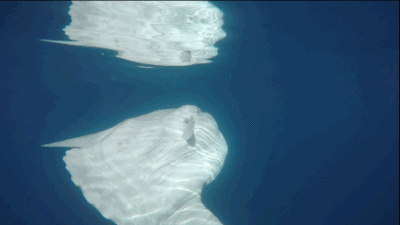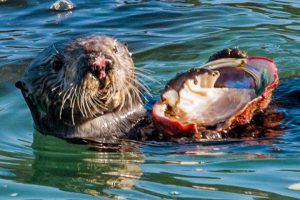
 Snorkeling around CIMI can lead to some amazing discoveries, but one of the shiniest of them all is spotting an empty abalone shell! Perhaps your CIMI instructor dove down for one of these beauties and you got to see it up close, or maybe you saw a live one suctioned to the rocks! These delightful mollusks inhabit the rocky shorelines of Catalina, but can be found in many other corners of the world as well.
Snorkeling around CIMI can lead to some amazing discoveries, but one of the shiniest of them all is spotting an empty abalone shell! Perhaps your CIMI instructor dove down for one of these beauties and you got to see it up close, or maybe you saw a live one suctioned to the rocks! These delightful mollusks inhabit the rocky shorelines of Catalina, but can be found in many other corners of the world as well.
 What kind of animal is an abalone?
What kind of animal is an abalone?
In the grand scheme of the animal kingdom, abalones fall into the category
of invertebrates, or animals that lack a backbone! These guys are considered mollusks, which means they have a strong, muscular foot like body and a hard shell. They are considered sea snails, so think slimy and snaily. The part of the abalone we see on snorkels is not their shiney side, but the rough, neutral colored back, which is why they can blend in so well with their rocky habitat. Abalones have a spiral like structure in their shells and respiratory pores on their sides. Their biggest predators include humans and sea otters, because we both have expensive taste in seafood!
 Where are they found?
Where are they found?
Abalones can be found in most coastal waters of the world, with only a few exceptions. They are highly abundant here on the California coastline, especially in the Channel Island range. In the Western U.S. we see about 7 different species of abalone, which include pink, pinto, black, white, green, red, and threaded. Abalones enjoy suctioning onto rocky crevices with their strong muscular foot, and eat diatoms, or small microscopic algae pieces.
 How do people use them?
How do people use them?
People have harvested abalones for well, as long as people have known about them! The oldest archeological proof we have of human use is from ruins dug up about 75,000 years ago in South Africa. People around the world include abalone in their diets, and it is considered a delicacy in many countries. People also like to use the pretty, iridescent shells for decoration and jewelry making. Indigenous populations who once inhabited the Channel Islands utilized abalones for food and trade for around 12,000 years. Fun fact, abalones produce pearls! They are unusually shaped, rare to find, and are quite colorful… a beautiful surprise to discover!
 How can we help protect them?
How can we help protect them?
In the U.S., there are many protective measures put in place to help preserve abalone stocks. Due to human disruption and a number of other factors, abalone numbers faced a severe decline starting in the 1960’s that continue today, with some species remaining endangered. Currently, no commercial take is allowed of abalone, however recreational harvesting is permitted in designated areas. Even with this regulation, abalone fisherman must free dive for these bottom dwelling snails; no scuba equipment is allowed! On Catalina, there are several Marine Protected Areas, or MPA’s, that protect these endangered abalones and allow them to regenerate. MPA’s state that nobody can take or damage any marine resource from the water, which gives fish and invertebrates a chance to grow bigger and rebound dramatically in their populations.


